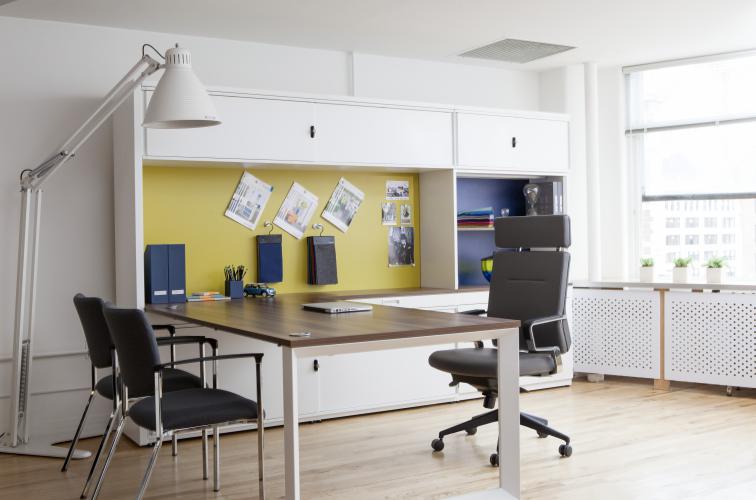
Is your work station ergonomic?
We all know that an ergonomic work environment can help prevent injury and alleviate fatigue, as well as improve the quality of employees’ workflow and their overall productivity.
So how can you evaluate and quantify the ergonomic quality of a work station? Modern office layouts and slick designs can be found on every specialized website; they project such a dazzling image that it can be difficult to determine just how comfortable they are for the people who will work in them.

Here are four elements to help you determine whether the employer’s concern for the corporate brand is matched by careful attention to employee health, well-being, and productivity.
#1 – Ergonomic office chairs
A high-quality office chair fosters and maintains healthy posture. Your work space should contain chairs that firmly support your elbows at a 90o angle when you are seated. Your knees should also be at a 90o angle with your feet on the ground in front of you and your back against the backrest. This position will limit muscle and joint discomfort and fatigue throughout the day. Many chairs are equipped with adjustable armrests so employees can find their own ideal work posture. Comfort should always take priority over style, especially when it comes to office chairs.
#2 – Appropriate desk height
Some desk styles are simply not well-suited to long work days. Today, many office environments understand that investing in height-adjustable desks can provide long-term benefits to their employees’ health and well-being. These ergonomic work tables are popular not only for their impact on employees’ fitness, but also because they transform a passive work environment into an active and dynamic one. Height-adjustable desks offer employees greater comfort while they work, and also provide more active ergonomics than a day spent at a fixed-height desk, even when chair quality is high.
#3 – Height-adjustable computer screens
Computer work is very demanding on the eyes. Visual discomfort can have negative short and long term effects, the most common of which include headaches and neck/shoulder pain. From an ergonomic perspective, the impact of intensive computer work on eye health has been sorely neglected. As a result, it’s crucial to ensure that your computer screen or work terminal is positioned at the correct height and distance. Workplaces that value ergonomics have adjustable monitor arms and accessories that can be set for perfect personal comfort.
#4 – Take a break (or two)
Every employee’s performance, mood, and well-being – even the boss’ – can be enhanced simply by taking a five-minute break after each hour of work. Changing positions and moving around the workplace lets you return to your desk with renewed energy. An ergonomically-designed work environment enables employees to stand up and be active throughout the day.
We hope these four tips help you better recognize the characteristic elements of an ergonomic workplace. You’ll be better informed when setting up your work station.





Post comments
Leave A Reply
Your email address will not be published.